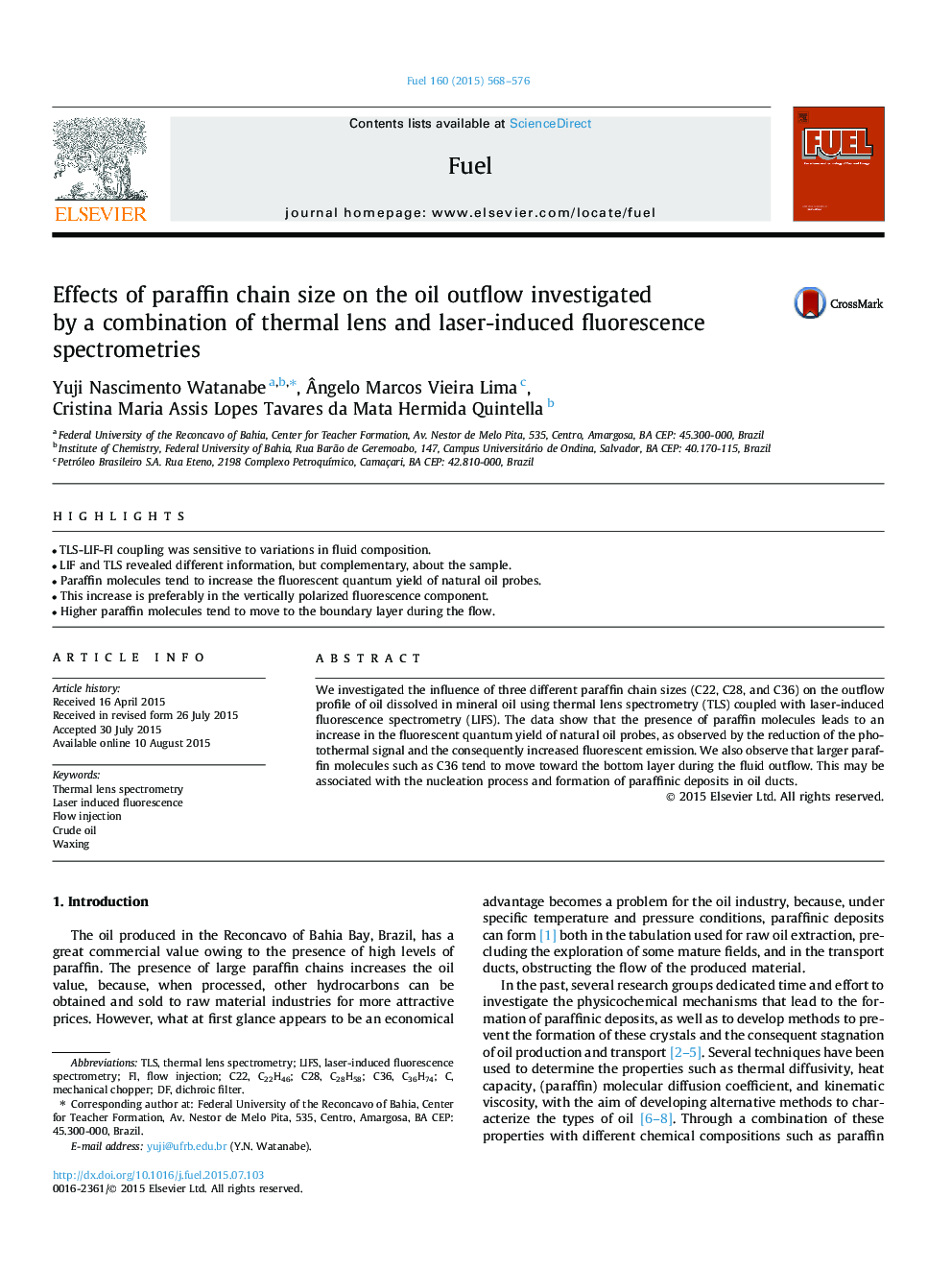| کد مقاله | کد نشریه | سال انتشار | مقاله انگلیسی | نسخه تمام متن |
|---|---|---|---|---|
| 205580 | 461112 | 2015 | 9 صفحه PDF | دانلود رایگان |
• TLS-LIF-FI coupling was sensitive to variations in fluid composition.
• LIF and TLS revealed different information, but complementary, about the sample.
• Paraffin molecules tend to increase the fluorescent quantum yield of natural oil probes.
• This increase is preferably in the vertically polarized fluorescence component.
• Higher paraffin molecules tend to move to the boundary layer during the flow.
We investigated the influence of three different paraffin chain sizes (C22, C28, and C36) on the outflow profile of oil dissolved in mineral oil using thermal lens spectrometry (TLS) coupled with laser-induced fluorescence spectrometry (LIFS). The data show that the presence of paraffin molecules leads to an increase in the fluorescent quantum yield of natural oil probes, as observed by the reduction of the photothermal signal and the consequently increased fluorescent emission. We also observe that larger paraffin molecules such as C36 tend to move toward the bottom layer during the fluid outflow. This may be associated with the nucleation process and formation of paraffinic deposits in oil ducts.
Journal: Fuel - Volume 160, 15 November 2015, Pages 568–576
